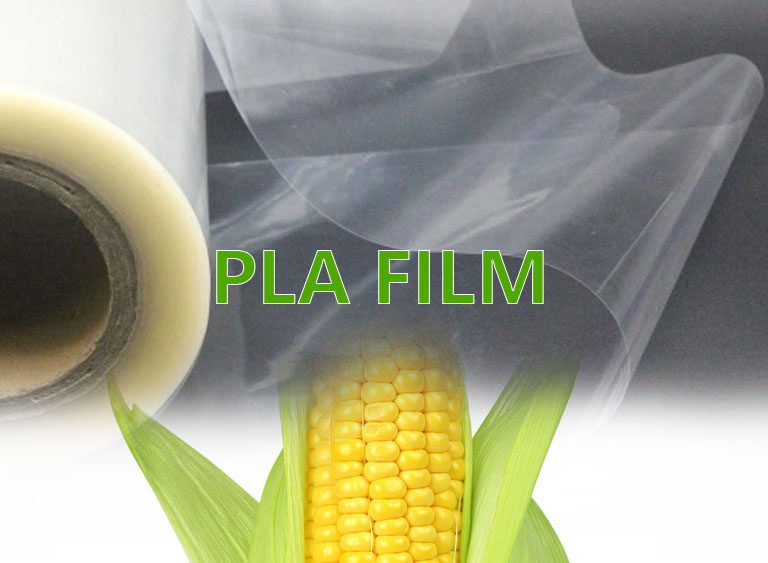Introduction
As people become increasingly aware of the environmental impact of traditional plastics, there has been a growing interest in developing sustainable alternatives. One of these alternatives is PLA film, which is gaining popularity as a more eco-friendly option. In this blog post, we will discuss what PLA film is, its benefits, and its role in promoting a more sustainable future.
What is PLA Film?
PLA (polylactic acid) is a biodegradable and compostable thermoplastic derived from renewable resources such as corn starch, sugarcane, and cassava root. PLA film is a thin, flexible material that can be used to make a wide range of products, including packaging materials, food containers, and bags. It is a popular alternative to traditional plastic film, which is made from petroleum-based sources and is not biodegradable.
Benefits of PLA Film
There are several benefits to using PLA film over traditional plastic film:
- Sustainability: PLA film is made from renewable resources, making it a more sustainable option than traditional plastics. It is also biodegradable and compostable, which means it can break down into natural materials and be returned to the earth.
- Reduced Carbon Footprint: PLA film production emits fewer greenhouse gases than traditional plastic production. PLA film production creates 60% less greenhouse gases compared to traditional plastic production.
- Safe for Food Contact: PLA film is FDA approved and is safe for food contact. It is also odorless and tasteless, making it an excellent choice for food packaging.
- Versatility: PLA film is highly versatile and can be used to create a wide range of products, from packaging materials to bags and even 3D printing.
Applications of PLA Film
PLA film is being used in many applications due to its sustainable properties. Here are some of the most common uses of PLA film:
- Food Packaging: PLA film is an excellent choice for food packaging due to its biodegradability and compostability. It can be used for products such as produce bags, deli containers, and coffee cups.
- Non-Food Packaging: PLA film is also used for non-food packaging, such as shipping envelopes, mailers, and protective packaging.
- 3D Printing: PLA film can be used as a filament for 3D printing, which is a rapidly growing industry that produces less waste than traditional manufacturing processes.
- Agricultural: PLA film is also being used for agricultural applications such as mulch film and greenhouse covers, as it can be composted and adds nutrients to the soil.
Challenges of PLA Film
While PLA film offers many benefits, there are also some challenges that need to be addressed:
- Cost: PLA film can be more expensive than traditional plastic film, which may deter some companies from using it.
- Temperature Sensitivity: PLA film has a lower melting point than traditional plastic, which means it may not be suitable for high-temperature applications.
- Biodegradability: PLA film requires specific conditions to biodegrade properly, such as industrial composting facilities. If not disposed of properly, it can contribute to litter and pollution.
PLA Film vs Other Biodegradable Films
While PLA film is a popular choice for sustainable packaging, it is not the only biodegradable option available. Other biodegradable films include those made from cellulose, starch, and other plant-based materials. Here are some key differences between PLA film and other biodegradable films:
| Criteria | PLA Film | Other Biodegradable Films |
| Cost | Can be more expensive than some biodegradable films | Some biodegradable films, such as those made from starch, may be less expensive |
| Performance | Better moisture resistance and barrier properties compared to some biodegradable films | Performance may vary depending on the specific type of biodegradable film |
| Biodegradability | Requires industrial composting facilities to break down properly | Biodegradation rates and requirements may vary depending on the specific type of biodegradable film |
| Availability | Widely available due to its popularity and increasing demand for sustainable packaging | Availability may vary depending on the specific type of biodegradable film |
Some interesting facts and figures about PLA film:
- PLA film is a rapidly growing market. According to a report by MarketsandMarkets, the global market for PLA film is projected to reach $495 million by 2023, up from $214 million in 2018.
- The food packaging industry is the largest consumer of PLA film. In particular, PLA film is used for packaging fresh produce, bakery products, and ready-to-eat meals.
- The United States is the largest consumer of PLA film, followed by Europe and Asia Pacific.
- PLA film has a lower carbon footprint than traditional petroleum-based plastics. According to a study by the University of Pittsburgh, the production of PLA film generates 75% less greenhouse gas emissions than the production of traditional plastic films.
- PLA film is also a popular choice for 3D printing. In fact, PLA is the most commonly used 3D printing material due to its low toxicity and ease of use.
- While exact consumption figures are difficult to determine, it is estimated that the annual consumption of PLA film is in the range of tens of thousands of metric tons. However, this figure is expected to grow as more companies switch to sustainable packaging solutions.
Conclusion
PLA film is a sustainable alternative to traditional plastics that offers many benefits for both the environment and human health. Its use can help reduce greenhouse gas emissions, waste, and pollution. While there are some challenges to its use, advancements in technology and increased demand for eco-friendly products are driving innovation and solutions to these challenges. As we strive for a more sustainable future, PLA film is an excellent option for companies and individuals looking to reduce their environmental impact.

